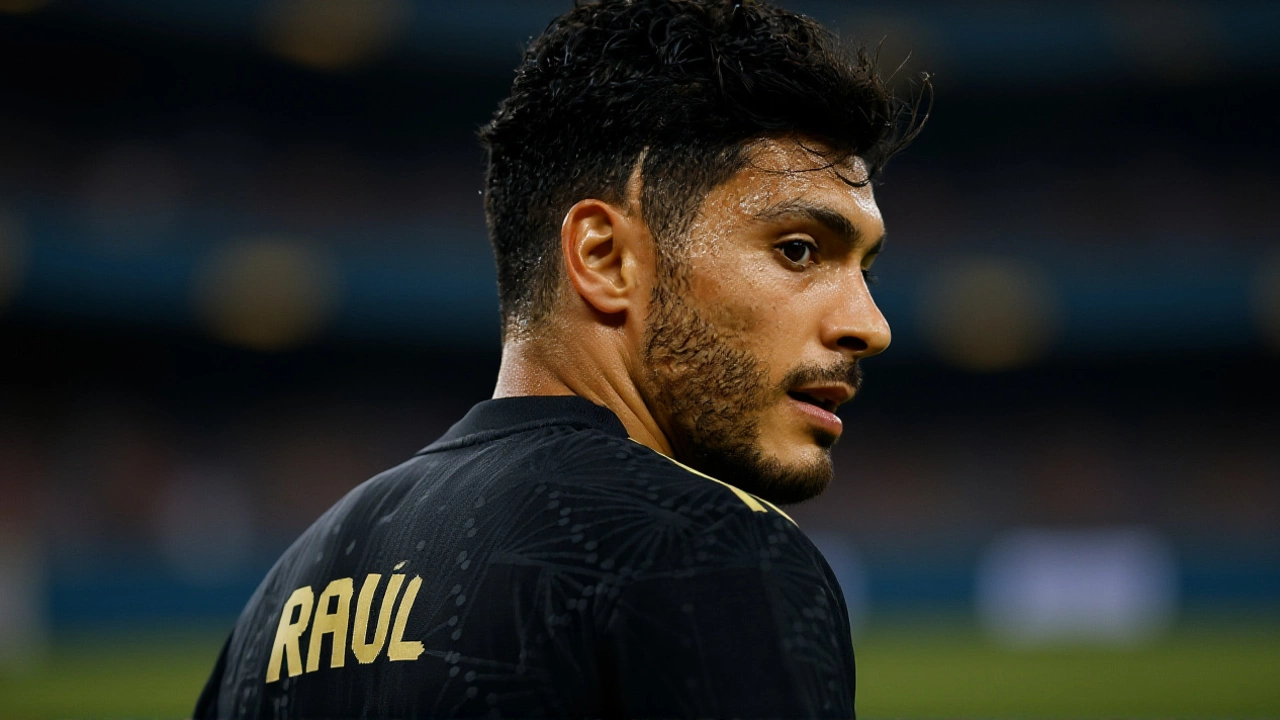On a cool November night in Torreón, Estadio Corona buzzed with quiet anticipation as Mexico and Uruguay played out a tense, goal-for-goal 1-1 draw — a result that mirrored nearly every expert prediction leading into the match. The friendly, held on the Mexico vs Uruguay international friendlyTorreón, served as the final tune-up before both nations enter the final stretch of 2026 FIFA World CupNorth America preparations. For Javier Aguirre, Mexico’s manager, it was another reminder that home advantage doesn’t guarantee goals. For Marcelo Bielsa, Uruguay’s tactical maestro, it was proof that even the most disciplined teams can struggle to break down stubborn defenses on the road.
Home Struggles, Away Woes: The Numbers Behind the Draw
Mexico entered this match on a five-game winless streak — four draws, one loss — and had failed to score in two of their last four home games. That’s not the record of a co-host nation preparing to carry the weight of a continent. Their last home win? Back in June. Since then, they’ve drawn with South Korea, Japan, and Ecuador, and were humiliated 4-0 by Colombia. Yet, statistically, they weren’t terrible. Eaglepredict.com’s data showed Mexico averaged 1.5 goals scored per match in their last six games, but only 0.5 at home. Their expected goals (xG) per match hovered around 1.27 at Estadio Corona — meaning they created chances, but couldn’t finish. The issue wasn’t creation. It was confidence.
Uruguay, meanwhile, had won five of their last six matches overall — but only one of those came away from home since July 2024. Their defense was rock-solid: zero goals conceded in three away fixtures. But their attack? Stagnant. Darwin Núñez, who scored a hat-trick in their last meeting, was absent. Without him, their front line looked disjointed. Bielsa’s system demanded movement, intensity, precision — and against a Mexico side sitting deep, those elements rarely aligned.
The Goals: A Moment of Brilliance, A Moment of Desperation
The first half belonged to Uruguay. Giorgian De Arrascaeta, the veteran playmaker, found space between Mexico’s midfield and backline in the 22nd minute. A deft one-two with Facundo Pellistri opened up the defense. Pellistri’s low cross was met by Manuel Ugarte, who slotted it past Guillermo Ochoa. Uruguay led 1-0. It was classic Bielsa: controlled, relentless, clinical.
Mexico’s response was slow, then sudden. In the 78th minute, Andrés Guardado, 37, played a diagonal ball from the left flank that skipped past two Uruguayan defenders. Uriel Antuna chased it down, held off a last-ditch tackle, and fired low into the far corner. The stadium erupted. For the first time in months, Mexico had found the net under pressure.
It wasn’t pretty. It wasn’t dominant. But it was enough.
What the Analysts Got Right — And Wrong
Multiple sources — Sportsmole, Footballpredictions.com, and Eaglepredict.com — all predicted a 1-1 draw. They cited Mexico’s home scoring drought and Uruguay’s away struggles. They were right. But only one called the exact goal scorers. Footballpredictions.com flagged De Arrascaeta as a potential threat at 200-1 odds. He delivered. They also predicted BTTS: Yes — correct. Under 2.5 goals — also correct.
But Scores24’s prediction of a 2-0 Uruguay win? Missed the mark. So did their assumption that Mexico couldn’t score more than one goal. That’s the danger of over-relying on recent form. Mexico’s 0-4 loss to Colombia was an outlier — a perfect storm of poor decisions and poor luck. Against Uruguay, they looked more organized. More determined.
Why This Match Matters More Than the Scoreline
For Mexico, this draw was a psychological win. They didn’t win, but they didn’t lose either. They held a world-class side to a draw on home soil — something they hadn’t done since 2023. Aguirre now has a blueprint: sit deep, counter through Guardado and Antuna, and trust Ochoa. The question isn’t whether they can qualify — they already have. It’s whether they can play with conviction when the stakes are highest.
For Uruguay, the draw exposed a deeper issue: they’re too reliant on individual brilliance. Without Núñez, they looked toothless. Bielsa’s system requires constant motion, but his squad lacks the physicality to sustain it over 90 minutes against compact defenses. Their next qualifier against Chile in March will be a true test. If they can’t find a consistent striker or a midfield engine to replace the retired Diego Laxalt, they risk being eliminated in the group stage — again.

What’s Next? The Real Test Begins in March
Mexico’s next match is a CONCACAF Nations League fixture against Jamaica on March 20, 2026. Then comes the real gauntlet: friendlies against Brazil and Germany in June — dress rehearsals for the World Cup opener in Los Angeles. Aguirre will need to find a center forward who can hold up play. Right now, it’s a revolving door of candidates — none convincing.
Uruguay’s next qualifier is against Chile on March 24, 2026. Bielsa must decide: do they stick with the 3-4-3 that didn’t work away from home? Or do they adapt? The return of Núñez could change everything. But if he’s not fit, or if the defense cracks under pressure, Uruguay’s World Cup dreams could end before the tournament even starts.
Historical Context: A Rivalry on the Edge
Only four official matches have been played between these two since 2010. Uruguay has won three. Mexico, one. But in the last decade, the balance has shifted. In 2019, Mexico won 2-1 in a friendly. In 2021, Uruguay won 3-0. Now, in 2025, they’re evenly matched. That’s the story here: parity. Two proud nations, both on the cusp of something bigger, but neither quite ready to take the final step.
Frequently Asked Questions
Why did Mexico struggle to score at home despite qualifying for the 2026 World Cup?
Mexico’s home struggles stem from tactical stagnation and a lack of a reliable striker. Despite automatic qualification, their attack has relied too heavily on individual moments rather than structured build-up. They’ve scored just two goals in their last four home games, and their xG per match has dropped to 1.27 — below their 2024 average of 1.6. The team lacks a focal point in the box, and midfielders aren’t consistently delivering final passes.
How did Uruguay manage to stay competitive without Darwin Núñez?
Uruguay leaned on their midfield discipline and defensive structure. Giorgian De Arrascaeta orchestrated play, while Manuel Ugarte and Federico Valverde covered ground relentlessly. Their 1-0 lead came from a set-piece transition, not individual flair. Without Núñez’s pace and finishing, they played more conservatively, relying on counterattacks and set pieces — a style that worked in this match but may not hold up against elite teams in the World Cup.
What does the 1-1 draw mean for Mexico’s World Cup chances?
It’s a positive sign. Mexico needed to prove they could compete with top-tier opponents without dominating possession. Holding Uruguay to a draw — especially after their recent scoring woes — shows resilience. But they still need a consistent striker and more creativity in the final third. If they can find that before June 2026, they could reach the Round of 16. Without it, they risk another early exit.
Is Marcelo Bielsa’s system still effective for Uruguay?
Yes — but only if the squad adapts. Bielsa’s high-pressing, attacking style demands elite fitness and technical precision. Uruguay’s current players are more pragmatic than the 2010-2014 generation. The system works best when they have a clinical finisher like Núñez. Without him, they become predictable. Bielsa may need to shift to a 4-2-3-1 for World Cup qualifiers to balance structure with firepower.
What’s the significance of Estadio Corona hosting this match?
Estadio Corona in Torreón is one of the 16 venues selected for the 2026 World Cup. Hosting this friendly was a test run for infrastructure, crowd control, and broadcast logistics. The 28,000-seat stadium has a reputation for intimate, intense atmospheres — perfect for testing how Mexico’s players respond under pressure. The match’s success helped confirm the venue’s readiness, especially compared to smaller or less-equipped sites.
Why did so many analysts predict a draw?
Because the data didn’t lie: Mexico had scored in only half their home games, while Uruguay had won just one away match in 2025. Both teams had similar xG averages (1.42 for Mexico, 1.38 for Uruguay). The betting markets reflected this balance — BTTS at 60% probability, under 2.5 goals at 70%. Analysts weren’t guessing; they were reading patterns. The draw was the most statistically probable outcome.
